GERMANY
Cologne

Cologne
Cologne
Cologne (in German Köln) is the fourth largest city in Germany after Berlin, Hamburg and Munich. It is located in the German state of North Rhine-Westphalia and is one of the most important European urban areas with more than ten million inhabitants.
Cologne is a beautiful city and lies on the banks of the Rhine. Tourists are drawn to the city known for its cathedral (Kölner Dom), the seat of the Catholic Archbishop of Cologne. Cologne is an important cultural center of the Rhineland, with more than 30 museums and hundreds of galleries. The University of Cologne is one of the oldest universities in Europe.
Although Cologne extends far beyond the boundaries of the Ringstrassen, the city center is still the most important area. Here are the best shopping streets - such as the Hohe Strasse (north-south) and Schildergasse (west-east). These streets are pedestrian areas and here you will find most of the historic buildings. Several bridges connect the city districts across the Rhine. Five bridges were rebuilt after World War II, the rest were built after that time.
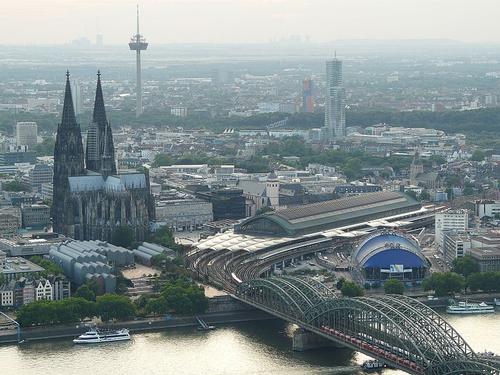 ColognePhoto: Neuwieser CC 2.0 Generic no changes made
ColognePhoto: Neuwieser CC 2.0 Generic no changes made
Location
The coordinates of Cologne are 50 ° 57 'North latitude and 6 ° 58' East longitude. The city lies on both banks of the Rhine in the North Rhine-Westphalia region at an altitude of 65 meters above sea level. Picturesque hills lie to the east and west of the city. The Rhine Valley runs southeast in the direction of Bonn.
Cologne is divided into 85 districts and nine boroughs. Much of the city lies on the banks of the river, but Cologne also has quite a few suburbs on the right bank. The metropolitan area covers 405 square km. Cologne is the center of the Cologne - Bonn region with approximately 3 million inhabitants. According to the 2010 census, Cologne had 1,007,119 inhabitants.
Cologne has always been an important commercial city and has good connections to other parts of Germany and other countries. With five Rhine ports, the city is the second largest inland port in Germany and one of the largest in Europe. Cologne-Bonn airport is one of the largest airports in Germany. The Cologne trade fair is one of the most important in Europe.
Weather
Cologne is one of the hottest cities in Germany. It has a moderate maritime climate with relatively mild winters and warm summers. The average temperatures in the Cologne area are 2 °C in January and 18 °C in July. Average rainfall is 796.2 mm per year. The average number of rainy days is around 120 per year. Cologne is regularly threatened by floods on the Rhine. The city has set up a service to protect itself from the floods.
History
The first settlement on the site of today's center of Cologne was founded in 38 BC by the Ubii, a Germanic tribe. The Romans colonized Cologne in AD 50. The city became the capital of the Roman province in 85 AD. Important Roman remains were found in present-day Cologne, especially near the Rhine bank. An ancient Roman ship was discovered here in 2007.
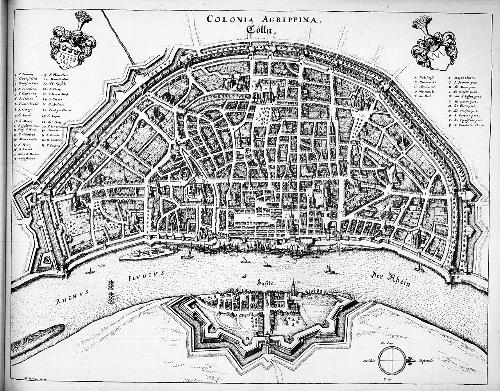 Map of Cologne from 1646Photo: Public Domain
Map of Cologne from 1646Photo: Public Domain
Cologne's location on the river Rhine at the junction of the main trade routes between east and west was the basis of Cologne's growth. Cologne was a member of the Hanseatic League and became a free imperial city in 1475. The economic structure of medieval and early modern Cologne was determined by its location.
Cologne lost its status as a free city during the French period. In 1815 Cologne became part of the Kingdom of Prussia. During the 19th and 20th centuries, Cologne grew into a large city, the surrounding cities were part of Cologne. During the First World War, the population grew to 700,000. Industrialization had a strong influence on the city, especially the successful engine production. During the First World War, Cologne was the target of only minor air raids and there was no significant damage.
During the bombing of Cologne in World War II (Cologne suffered 262 air raids by the Western Allies), about 20,000 civilian victims were killed. The city center was almost completely destroyed. By the end of the war, most of the residents had moved to the countryside to escape the air raids and the population of Cologne had been reduced by 95%. At the end of 1945, Cologne already had almost half a million inhabitants.
In post-war Germany, the nearby city of Düsseldorf was elected the political capital of the state of North Rhine-Westphalia, and Bonn became the temporary capital and seat of the government of the Federal Republic of Germany. This is despite Cologne's status as the region's largest city. By 1959 the city's population had grown back to pre-war numbers. By mid-2010, Cologne will have more than a million inhabitants.
Sights
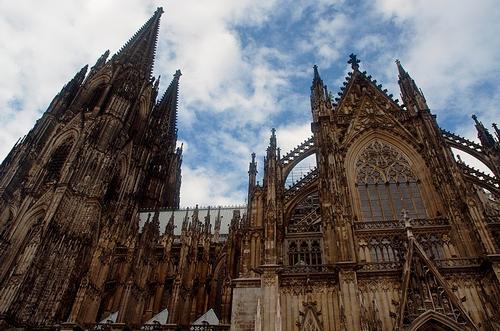 Cologne Cathedral Photo: Leo Tiresias CC 4.0 International no changes made
Cologne Cathedral Photo: Leo Tiresias CC 4.0 International no changes made
The city's most famous monument and the symbol of its inhabitants is Cologne Cathedral (Kölner Dom). Construction of this remarkable Gothic church started in 1248 and was completed in 1880. It was declared a World Heritage Site in 1996. The cathedral houses the shrine of the Three Kings and is said to have the relics of the Three Biblical Magi.
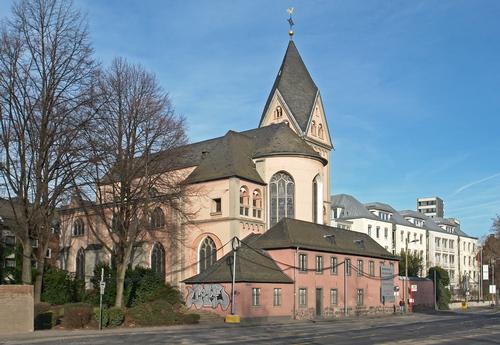 Cologne St. Maria LyskirchenPhoto: Hans Peter Schaefer CC 3.0 Unported no changes made
Cologne St. Maria LyskirchenPhoto: Hans Peter Schaefer CC 3.0 Unported no changes made
Twelve Romanesque churches are unique examples of medieval church architecture. The origins of some of the churches go back to Roman times. St. Gereon's Church was originally a chapel in a Roman cemetery. All these churches were very badly damaged (with the exception of St. Maria Lyskirchen) during the Second World War. The reconstruction was completed in the 1990s.
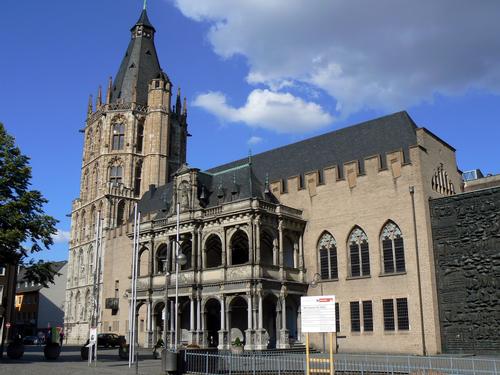 Town hall ColognePhoto: VollwertBIT CC 2.5 Generic no changes made
Town hall ColognePhoto: VollwertBIT CC 2.5 Generic no changes made
Medieval houses from the inner city are of particular interest to tourists. The town hall (Kölner Rathaus) from the 12th century is the oldest town hall in Germany and is still in use today. The Renaissance style loggia and tower were added in the 15th century. Other famous houses are the Gürzenich, the Haus Saaleck and the Overstolzenhaus.
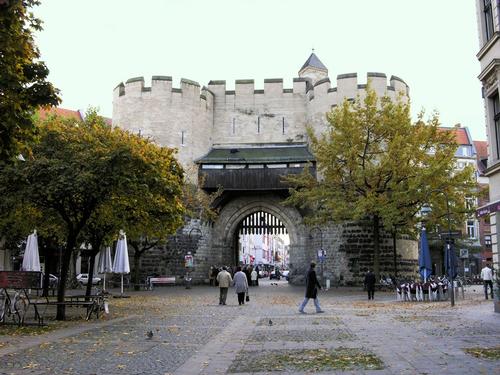 Cologne EigelsteintorburgPhoto: Hans Peter Schaefer CC 3.0 Unported no changes made
Cologne EigelsteintorburgPhoto: Hans Peter Schaefer CC 3.0 Unported no changes made
The semicircular shape of the inner city was originally defined by a 6 km long defensive wall, which was completed in about 1200. The medieval defensive walls once contained 12 city gates of which only three survived: the Eigelsteintorburg on Ebertplatz, the Hahnentor on Rudolfplatz and the Severinstorburg on Chlodwigplatz. The wall enclosed the city and protected about 40,000 people. At the time, Cologne was bigger than Paris. In the 1880s the medieval fortifications were demolished and replaced by a chain of ring roads (Ringstrassen).
Much of the city consists of parks, forests, lakes and sports facilities. Two large parks roughly follow the patterns of the old fortifications around the inner city. The first park is located just outside the Ringstrassen and includes zoological and botanical gardens, the Stadtgarten, and the Volksgarten. The second park is a wooded area that extends around the western and southern outskirts of the city with an extensive recreational area and the Müngersdorfer Stadium. On the right bank of the river is the Rhine Park, a large green area adjacent to the Messe, a conference center with rooms for fairs and exhibitions. An indoor arena provides space for sporting events and concerts and is also located on the right bank.
 Cologne Roman-German MuseumPhoto:Politikaner CC 3.0 Unported no changes made
Cologne Roman-German MuseumPhoto:Politikaner CC 3.0 Unported no changes made
Cologne has many famous museums, which are a must to visit. The most important are: The Roman-Germanic museum with art and architecture from antiquity. The Ludwig Museum has one of the most important collections of modern art in Europe, including a Picasso collection that is matched only by the collections in the museums of Barcelona and Paris. The Schnütgen Museum of Religious Art is housed in one of the city's twelve Romanesque churches, the Church of St. Cecilia.
Tips
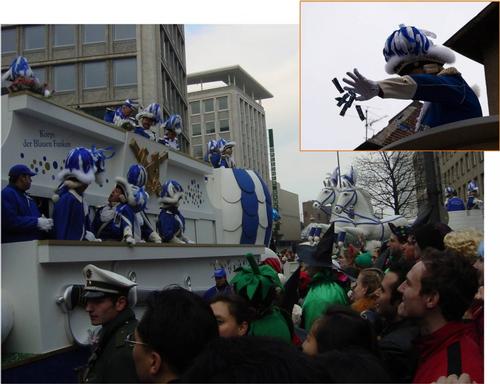 Cologne CarnivalPhoto: Illapart CC 3.0 Unported no changes made
Cologne CarnivalPhoto: Illapart CC 3.0 Unported no changes made
One of the largest street festivals in Europe is the Cologne Carnival. It attracts thousands of tourists every year in November when it officially starts with the proclamation of the new Carnival season. The party itself is in February and attracts many more visitors.
One of the most important shopping areas is the Hohe Straße. Tourists will find numerous gift shops, department stores, fast food restaurants and electronics stores.
If you are looking for a nice view of the city, take the Cologne Cable Car to make the crossing over the river Rhine between the zoo and the Rheinpark.
Useful links Cologne
BBC Country ProfilesWorld Fact Book Explore all Countries
How to call
Last updated November 2025
Copyright: Team - The World of Info